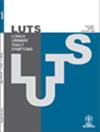Barriers to Seeking Medical Consultation for Urinary Incontinence: A Nationwide Population-Based Study in Saudi Arabia
Abstract
Objectives
Urinary incontinence (UI) is prevalent and often underreported due to various barriers affecting healthcare-seeking behavior. This study aimed to identify barriers preventing patients from seeking help for UI, assess the influence of sociodemographic and clinical factors on these barriers, and determine the associations between UI types and barriers in Saudi Arabia.
Methods
A nationwide, cross-sectional study was conducted from June 2024 to April 2025 among individuals aged ≥ 18 years who experienced UI and had not sought medical consultation. Participants completed a questionnaire that comprised sociodemographic data, the International Consultation on Incontinence Questionnaire-Urinary Incontinence Short Form (ICIQ-UI SF), and a modified Barriers to Incontinence Care Seeking Questionnaire (BICS-Q). Data were analyzed using descriptive statistics, independent t-tests, ANOVA, and binary logistic regression.
Results
Of 505 eligible participants, 80.6% were female, predominantly aged 31–45 (40.0%), and the most common UI type was mixed UI (37.2%). The most significant barriers were embarrassment (33.3%), logistical inconvenience (appointments scheduled too far in advance, 36.8%), and provider-related issues (lack of available providers, 12.3%). Gender, obesity, residency region, and type of UI significantly influenced barrier perception. Fear-related barriers were notably higher in nocturnal UI, whereas embarrassment and cultural concerns were highest among those with mixed UI.
Conclusion
This study highlights significant embarrassment, inconvenience, and provider-related barriers deterring healthcare-seeking among UI patients in Saudi Arabia. Findings emphasize the need for culturally tailored interventions, improved healthcare accessibility, and targeted public awareness campaigns.


 求助内容:
求助内容: 应助结果提醒方式:
应助结果提醒方式:


